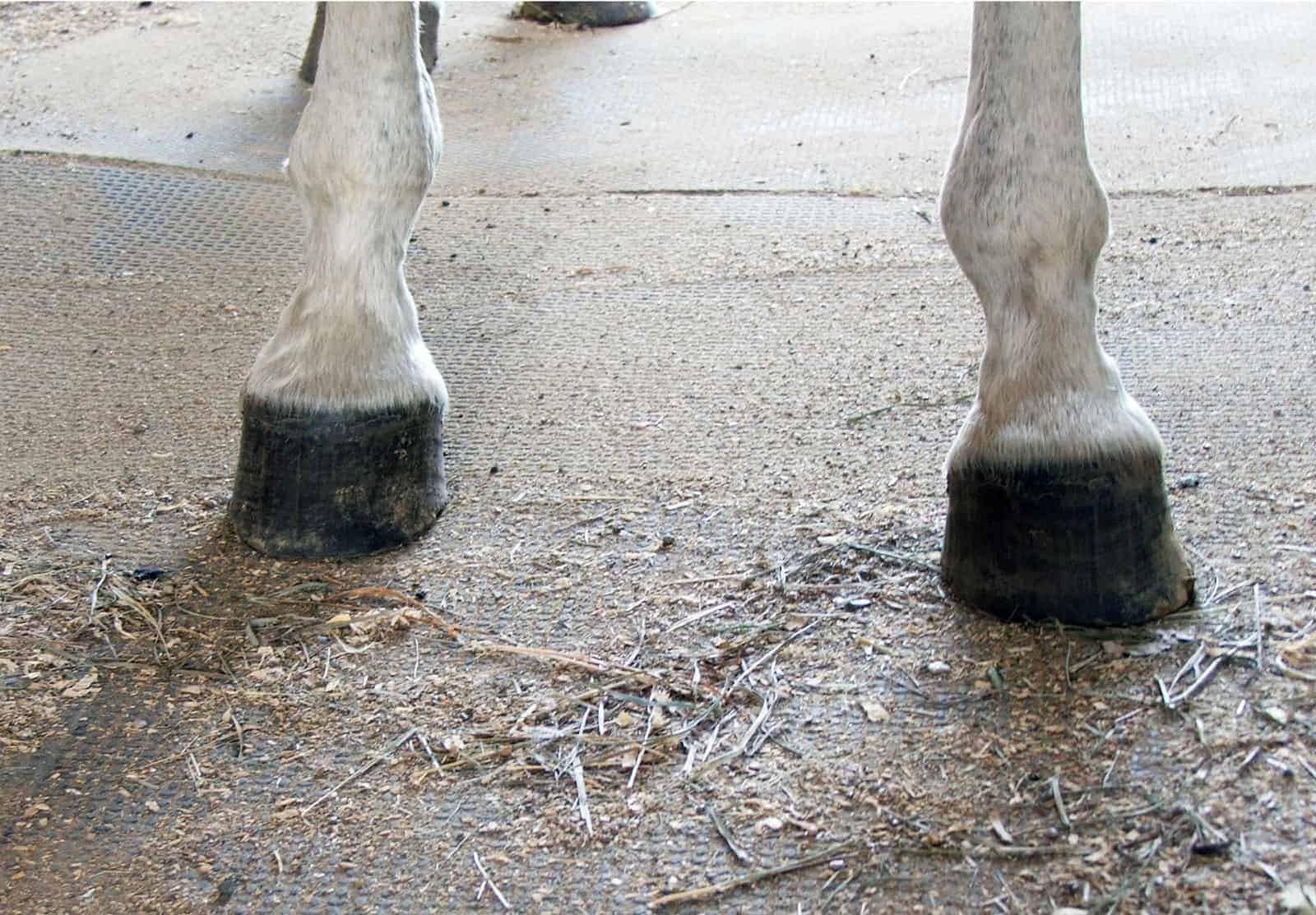Club Foot Heritability in Horses
- Topics: Article, Club Feet, Genetics, Hoof Care, Hoof Problems, Lower Limb

A: Club foot is a term commonly used to describe an abnormally upright front foot conformation. It can be a congenital (born this way) or developmental (acquired early in life during foalhood) issue, or it can occur later in life due to chronic lameness or injury that causes the horse to not bear weight fully on the affected limb. In those cases, the underused foot eventually becomes steep and narrow while the healthy foot becomes splayed and flat.
Congenital club foot can range from a mildly upright hoof to one where the dorsal hoof angle (that the front of the hoof makes with the ground) approaches or is beyond vertical. These are commonly termed “flexural deformities” because the deep digital flexor (DDF) tendon and the associated inferior check ligament are abnormally tight in these animals. This creates excessive contraction at the DDF attachment to the bottom of the coffin bone, resulting in downward rotation of the bone. The normal alignment of the short pastern bone and coffin bone is a straight line visible on X ray, but in a club foot the coffin bone angles downward relative to the pastern (a “broken forward” axis).
Researchers have tried to prove the degree of heritability of many orthopedic issues in horses, including osteochondritis dissecans (OCD) and navicular disease, but it is surprisingly hard to prove a link between genetics and certain problems once all of the variables are factored in. Despite the lack of scientific backing, many experienced horse people believe certain traits tend to be passed down through certain lines, and I do believe that congenital club foot runs in certain families, even if the parent does not show the trait. If this mare has thrown multiple offspring with the same problem (and I have often found it will be the same foot affected in every foal), there is a good chance she will continue to do so, especially if bred to the same stud. Even when you “breed the best to the best and hope for the best,” you never know what you are going to get. It is likely that even with careful pairing, there is an increased probability she will continue to produce some babies that have a club foot, although not every one of them will have this trait due to the variability of each mating
Create a free account with TheHorse.com to view this content.
TheHorse.com is home to thousands of free articles about horse health care. In order to access some of our exclusive free content, you must be signed into TheHorse.com.
Start your free account today!
Already have an account?
and continue reading.
Written by:
Melissa McKee, DVM
Related Articles
Stay on top of the most recent Horse Health news with















